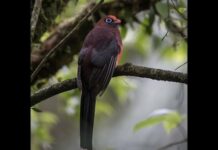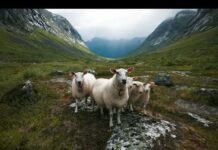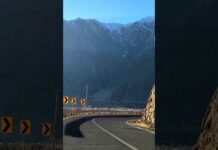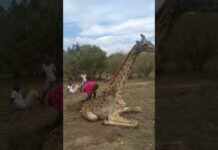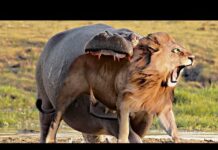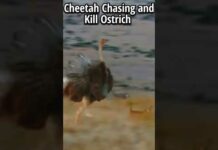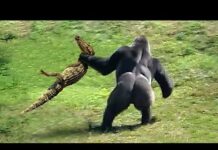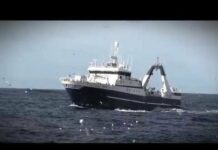From underwater hunts to dancing whales, here are some of our all-time favourite ocean moments.
Subscribe: http://bit.ly/BBCEarthSub
Watch more:
Planet Earth http://bit.ly/PlanetEarthPlaylist
Blue Planet http://bit.ly/BluePlanetPlaylist
Planet Earth II http://bit.ly/PlanetEarthIIPlaylist
Planet Dinosaur http://bit.ly/PlanetDinoPlaylist
Welcome to BBC EARTH! The world is an amazing place full of stories, beauty and natural wonder. Here you’ll find 50 years worth of entertaining and thought-provoking natural history content. Dramatic, rare, and exclusive, nature doesn’t get more exciting than this.
Want to share your views with the team? Join our BBC Studios Voice: https://www.bbcstudiosvoice.com/register
This is a commercial page from BBC Studios. Service information and feedback: http://bbcworldwide.com/vod-feedback–contact-details.aspx
the inlets echo to the sound of a mysterious song a curtain of bubbles and a haunting call hold the secret to an ingenious way of fishing.
this is bubble net feeding a dozen whales work together to harvest the herring bonanza such fishing requires an extraordinary level of intelligence and cooperation the lead whale dives first she is the.
Bubble blower it's her job to find the fish the rest follow in formation each takes exactly the same position in every lunge once she's located the fish the leader blows.
A net of bubbles that completely encircles the show another whale calls to synchronize the group panicked by the eerie sound and the blinding bubbles the fish won't cross this fizzing curve.
as few as a hundred humpbacks have learned how to feed as a team like this and this is the only place on the planet.
Where whales fish in this way this is steve a crab fisherman the basics are simple put some bait in a pot let it sink sit back.
And wait for crabs to wander in steve knows that most crustaceans aren't known for their iq once inside the trap they haven't got a clue how to get out the exit is obvious enough to us but some animals just aren't born with much in the way of brains.
But why does the seafloor here look like a crab graveyard well there's another crab fisherman living down here in this cave and it's a much more creative one than steve the animal living here shouldn't really be a problem.
Its closest relatives are slugs snails and clams it's a giant pacific octopus an animal with one huge advantage an enormous brain taking body size into account only those of birds and mammals are bigger two-thirds of those brain cells or neurons are actually in its tentacles.
And it uses them all to approach the problem of crab poaching plan a is to smother the prey with the metal trap in the way that's not too successful but that huge brain helps the octopus to get creative and to think up a dramatically different.
Strategy once inside there's an easy meal but this could be its last breaking in was easy but the octopus can do something crabs find impossible a sure sign that an octopus has struck.
A trail of empty shells and a frustrated fisherman what can i say these creative problem-solving skills set octopus apart from all other invertebrates male humpback whales repeat each other's songs and add to them so they become ever more.
Complex and beautiful showing off their memory as well as sheer volume listening carefully to this song is a female humpback whale she's here with last year's calf and is ready to conceive another one he stops singing and follows her he may sing to her again but not if he.
Thinks other males are close by they start to get to know each other it's an old-fashioned slow-motion waltz such beautiful movement is rarely seen dance in the animal world is little.
Understood but their courting ballet is about to be cut short rival males have detected that something is going on they arrive in force a mob on the dance floor.
Set on disruption each male tries to get beside the female and to intimidate the others the 35 ton males are set on a fight animals that can seem so tender in a moment become so aggressive the mating game has become a battle they smash into one another they tail.
Slap and bella most of this is just show throwing their weight around it's over the biggest male has won at this time of year polar bears on average succeed only once in 20 hunts if the hunter is skinny like this one.
That may not be often enough all she can do is keep trying to prevent her scent betraying her she makes a wide sweep to get downwind of the seal getting close.
She's now right behind the seal incredibly she caught the seal underwater it's only small but even so its blubber alone will contain a hundred thousand calories.
Enough to sustain this bear for a week and in that time she might even catch another but this can't go on forever as summer continues temperatures are rising each hunt requires more energy draining the bears of their reserves.
In western australia these dolphins have taken on an even tougher challenge the fish have taken refuge close to the beach where the water is only a few centimeters deep tail slapping is a method dolphins often use to stun their prey but it doesn't seem.
To work here the fish are tantalizingly close but they're still out of reach so the dolphins try another technique vigorously pumping their tails they work up some speed and then they hydroplaned.
their momentum carries them right through the shallowest waters and onto the fish now they're in real danger of being stranded but fortune favors the brave younger dolphins lie alongside watching.
But so far only eight individuals here have mastered this daring technique the soft corals are one of the main reasons that all this life is attracted to the yongala almost every available space on its once smooth hull is covered with them.
The soft corals are a refuge for millions of small fish but they must dart out from time to time to feed on the plankton in the current and wherever small fish gather it's not long before something bigger turns up to eat them queensland gropers are real giants the.
Largest bony fish on the reef this yongala resident is as big as a small car which is why he's known locally as the vw his mouth so big he could swallow sharks and rays whole but another resident has an even.
Deadlier bite sea snakes have more potent venom than many of their land living relatives and they put it to good use the olive sea snake doesn't really look as if it's hunting but when its small head disappears into a hole it can trap and paralyze any fish hiding there.
It's unusual for so many predators to be swimming so close to each other but there's so much to eat here most of the action is on top of the wreck where the strongest currents sweep in the most food for the small fish that live here to venture into the blue water is a huge gamble but they've got to do it to feed.
If they get it wrong and go too far that can mean the difference between life and death the amount of marine life to be found in the hundred meters of the wreck of the yongala is truly staggering arguably it's a greater concentration of life.
Than on any spot on the barrier reef itself many creatures seek refuge in the shade in grand cayman millions of silversides gather in caves under the reef there's safety in numbers but danger lurks here in the dark.
A monster the length of a man with a ravenous appetite my tarpon he has explosive acceleration hitting up to 60 kilometers per hour his cavernous jaws create a suction effect when he strikes he swallows his prey whole.
As more silver sides enter the cave more tarpon gather this seasonal feast is just too good to miss the smaller females travel as a group keeping a watchful eye in all directions they know that killers lurk in the depths.
The surface is a dangerous place to linger especially if you're alone killer whales the sea lion is wounded but the killers keep their distance.
His powerful jaws are still a threat to the hungry orca he struggles towards the safety of land but his injuries are slowing him down blow by blow they wear him down it's a carefully coordinated attack one killer distracts his attention while another hits his soft underside.
The richest seas on earth can be treacherous sailfish three meters long are closing in on prey they will only use just enough energy to make their kill never wasting a fin stroke nearly a hundred sailfish have.
Surrounded a single school of bait fish it's very rare to see so many of these hunters in one place to herd their prey the predators raised their huge dorsal fins a mistimed strike by one sailfish could fatally damage another.
But each continually changes its color from blue to striped to black that warns its companions of its intentions and also confuses the prey as the shoal is driven nearer the surface it comes within the range of the sea birds out here in the open ocean there is.
Nowhere for the baitfish to hide sailfish live a high octane life to survive they must find prey daily so their entire existence will be spent on the move with hiding places at a premium fish.
Will go to incredible lengths to hide down here and none more so than this the pearl fish is vulnerable out in the open so while not feeding it must conceal itself but it has a particular taste in hiding places this is a sea cucumber which feeds on the sea floor.
Its body is basically a living tube it sucks in sand at one end extracts anything edible and passes waste out the other just what the pearl fish has been looking for but not the mouth end it's drawn to the odor of the other end.
Foreign sea cucumbers are repulsive to most predators so the pearl fish is safe inside it'll stay there until it's time to feed again it doesn't harm its host but the bad news for sea cucumbers is that pearl fish are happy to share.
Their temporary home with others it seems there's plenty of room for all even when more sea lions arrive they can't seem to break down the sardines coordinated defenses with a shoal this big the sea lions need to isolate a smaller more manageable.
Group of fish but with so few predators the fish still have the advantage all the sea lions can do is keep the sardines at the surface and wait for others to join them.
Tuna their arrival changes everything tuna attacked from below cutting off the sardines escape route down to deep water next to appear sheer waters excellent flyers but also surprisingly agile underwater.
With so many predators attacking from all sides the advantage starts to shift away from the sardines as the fish pack ever tighter their showing strategy now makes it easier for the hunters.
copper sharks they've scented blood in the water surprisingly perhaps the predators never.
Attack one another they work together to corral the ball of fish taking turns to grab a mouth common dolphins as the show gets ever smaller each.
Sardine scrambles desperately to hide in the middle but now there's no escape a buddhist whale finishes off the feast in queues 30 or 40 strong they head for the drop-off on the ocean side of the lagoon.
It seems that they know the way from the overall direction of current and swell which remains constant at this depth lines join together into longer lines sometimes 60 lobsters will be marching one behind the other the migration takes place within a few days each year.
And then the whole lagoon floor is covered with parallel marching columns traveling in line reduces the drag of the water on an individual by as much as half but there's another reason why it's better to march in this way if they are threatened they can form.
Defensive circles a trigger fish one of their main enemies it wants to attack the vulnerable legs but it has little chance of getting past the ring of spear-like antennae but a solitary traveler is in trouble first it's disarmed then the rest is easy.
There are others ready to pick flesh from the broken limbs within a few minutes all that is left is an empty shell when the survivors reach the shelter of the rich reefs that run along the edge of the ocean drop off they abandon the caravans and each makes.
Its own way one by one they clamber down the slope to even greater depths where they will be safe from the storms that churn the waters hundreds of feet above it returns to the place where it last.
Left its chick in the hope that it might still be close by but chicks tend to wonder so the adult has to call to it the chick responds and they slowly home.
In on one another the plaintiff and treatise of the chick stimulates the adult to regurgitate a mouthful of fish with the return of one parent the other is free to go to sea to feed for itself aware of the leopard seal's presence the.
Penguins pressed together at the ice edge unwilling to be the first to risk diving in occasionally the seal comes out onto the ice and attempts to grab one.
but its most successful strategy by far is to lie in weight it hides behind the corner of ice the emperors gain confidence and make a dash for it the first wave of penguins escape once in open water they will be safe.
But the seal is alerted by the noise and through the massive bubbles it makes its attack almost invariably it makes a kill encouraged by the absence of the seal the remaining penguins.
Make a break for the open sea in time their chicks will fledge and when the antarctic autumn is near its end these adults will walk across the newly formed ice to endure yet another winter on the frozen sea.
Hump-head parrotfish nearly a meter and a half in length their jaws are so powerful they can bite through rock when they descend to feed the reef itself is under threat they are indiscriminate feeders taking both rock and coral alike.
In their quest for algae these fish play a large part in the erosion of the reef the rock and coral they swallow emerges later as a fine sand on a single reef they can produce tons of it every year this soft sand forms the tropical.
Beaches that we find so alluring over time the sand builds up to form an island which is then colonized by animals and plants trees take root birds arrive.
The guano from thousands of turns which have chosen to nest here enriches the sandy soil which then can support more plants minky whales make their way into these placid waters in summer this is the most abundant whale in the southern ocean.
Minkies are one of the smallest of all the baleen whales and like all others they come here to feed the majestic humpback whales are also summer visitors they have traveled thousands of miles from their winter breeding grounds in.
The tropics to gather the food that becomes available here in summer in just four months they accumulate enough fat to provide them with energy for the whole of the rest of the year all these animals have come here in search of one.
Thing the krill krill is the mainstay of the antarctic food web it occurs in phenomenal quantity billions of individuals in a single swarm and swarms can stretch for miles fur seals also collect this rich super abundant food.
Cruel swarms are very patchy but once found feeding is easy hmm humpbacks engulf hundreds of thousands of them in a single gargantuan mouth.
When the going is good the whales feed continuously each eating up to two tons of fuel in 24 hours the most astounding experience i've ever had probably in my life was traveling down to the antarctic peninsula to film the killer whales for frozen planets it was just the most.
Remarkable experience we were down there to try to find a holy grail sequence something that has been talked about for years and years but no one ever really knew if it was something that really happened or if it was actually sort of you know just a legend in scott's diaries they'd had this.
Remarkable experience killer whales are seeming to work as a team and approach the ice and use a wave to knock off members of his team but no one had ever really scientifically recorded it let's say so we were setting off with this challenge to record this behaviour that.
Possibly might not even exist we set off and headed out in this phenomenal boat called the golden fleece we had to cross straights passage which is perhaps the most dangerous passage of water in the world you're on there for four days non-stop rolling backwards and forwards so it's just this real.
Sense of adventure as you're going across you come out of drake's passage and then all of a sudden you're coming down the peninsula past all these icebergs and really entering into this icy world it was quite phenomenal and the water can be super glassy and the life around and you're seeing uh you know these these groups of.
Penguins you know heading out to fish in the morning it was so exciting to be there we've been out down there about a week maybe eight days we were getting quite um despondent as to whether we were going to see this behavior and then the scientists bob and john i.
Heard them shout and they said killer whales get the whales and and we knew we were with a group so the only way we were ever going to be able to keep up with these guys is if we could get a satellite tag onto one of the members of the family group it attached on and that was fantastic.
Because that meant then we had this link with this family group of killer whales and we could follow them through the ice that was really the key so we continued south to get to the place where there was the potential to get this behavior but we still had no idea if we were actually.
Going to see it or if it really happened we started following these guys and it was within the first hour we could see this really fascinating behavior of them spy hopping individually they would just poke their heads up and come up rise up and just have a look around see what was about.
And of course they were looking for the seals and then when they saw one when they found a seal or a group of seals lying on the ice they made a signal and the whole family would just gather around this ice flow instead of getting one killer whale coming up you would start getting two and then.
Three still we didn't really know what was going on so we were watching this behavior and going wow you know look that really interesting seal maybe they're gonna do something all the killer whales just disappeared and we were sort of looking at ourselves and feeling quite happy that we were.
Seeing this thing and i was just climbing up to the roof of the boat to take the cover off our main camera the cineflex camera and i was halfway up and i heard this shout wave and it was like froze and just looked out and there is this huge wave.
Heading towards the ice flow this seal and seals like waking up and kind of looking and that entire boat is just like like this and the wave crashed down and that and we just knew you know that was it we just like the whole boat just went.
And we just knew that was it this was the behavior we were gonna get it and the hunt was on i mean these guys they were on it it was the most exciting thing i've ever seen in my life and that day we filmed i think two or three hunts i mean they didn't stop they kept sending these waves at the ice.
And the ice was spinning around the seal was clinging on and then being flipped off it was so dramatic i mean they were whizzing around and turning around and teaming up again and then diving down and swimming towards the ice and just creating these waves and it was.
Just it was incredible it was really amazing we'd all witnessed something that no one had ever seen before ever and it just felt like this total window onto another world and another time and place it was the most unbelievable privilege for sea lions to venture into deep water.
Here is very dangerous indeed it's much safer to stay in the shallows if they can in one or two places channels enable the whales to get really close to the beach those are the danger spots to get off the beach the killer has to thrash its body.
No other whale deliberately beaches itself in this way or has perfected this method of getting back to the sea as long as the sea lions stay well up the beach you might think they would be safe but the hungry whales are very daring now several of the whales are hunting in.
A group that sea lion was keeping just ahead of one of the whales but was caught by another it probably hadn't seen so this savage beating may be to separate hide from flesh every year in june tiger sharks appear.
In the shallow waters around this scattering of tiny sandy islands they've traveled hundreds of kilometers in anticipation of an event that lasts less than two weeks and their timing is impeccable albatross chicks are sitting ducks the sharks may have lost the element of.
Surprise but their high visibility will make little difference to the albatross chicks behavior right now the focus is on flying for fledging albatross that's not as simple as you'd think the problem is the island's runway is a bit short.
Especially for a bird with one of the world's longest wingspans the maiden flight often ends in a wet landing and that's why the sharks are here with their highly acute senses they're onto the chicks within a few moments of touchdown.
During two weeks of fledging over a hundred albatross chicks make the same fatal error and the sharks take full advantage in an ocean where food can be surprisingly scarce this annual feast is something these.
Sharks depend on you
We are excited to present to you the captivating video titled “ONE HOUR Of Amazing Ocean Moments | BBC Earth”. Get ready to embark on a journey of enjoyment, smiles, and laughter as you watch this delightful creation. “ONE HOUR Of Amazing Ocean Moments | BBC Earth” is a perfect blend of entertainment and amusement, carefully crafted to bring joy to your day. From the moment you press play, you’ll be greeted with a cascade of lighthearted moments, heartwarming scenes, and perhaps even a few surprises that will tickle your funny bone.
Whether you’re in need of a quick pick-me-up or simply looking for some light-hearted entertainment, “ONE HOUR Of Amazing Ocean Moments | BBC Earth” has you covered. The video promises to deliver a collection of moments that are bound to leave you grinning from ear to ear. With its engaging content and skillful presentation, “ONE HOUR Of Amazing Ocean Moments | BBC Earth” is more than just a video – it’s an experience designed to brighten your mood and spread positivity.
The creators of “ONE HOUR Of Amazing Ocean Moments | BBC Earth” have poured their creativity and dedication into crafting a visual treat that resonates with audiences of all ages. Through expert storytelling, impeccable timing, and an array of engaging content, “ONE HOUR Of Amazing Ocean Moments | BBC Earth” promises to be an unforgettable journey that lingers in your memory long after the video concludes.
So sit back, relax, and prepare to be entertained as you dive into the world of “ONE HOUR Of Amazing Ocean Moments | BBC Earth”. It’s a delightful video that aims to bring a dose of happiness to your day, leaving you with a lasting smile and a heart full of laughter.
This video was uploaded in youtube and has recieved 12066906 views so far. This is a great achievement and laso it has received 84625 likes and .
Data bout the video:
Rating: ,
Video dimensions: 2d,
Video definition: hd,
Video duration: 01:00:37,
Video favourite count: 0
Video comment count: 1770


